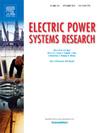A flexible contact switching method of integrated control mode for enhancing the FRT capability of GFM-controlled DFIG
IF 3.3
3区 工程技术
Q2 ENGINEERING, ELECTRICAL & ELECTRONIC
引用次数: 0
Abstract
This research addresses the issue of poor fault ride-through (FRT) performance of doubly fed induction generators (DFIGs) when utilizing grid-forming (GFM) control. By integrating the traditional grid-following vector control, which boasts strong FRT capabilities and mature technology, along with its supporting hardware auxiliary equipment, an innovative flexible contact switching method for an integrated control mode is proposed. This method focuses on key indicators during the FRT process, considering the different stages of the FRT period and the impact of voltage dip severity. Based on an in-depth analysis of the fundamental mechanisms causing rotor-side overcurrent during FRT, a uniformly formatted differential current-limiting term is designed that can seamlessly apply to both control modes. Switching between control modes is achieved by introducing a resistor-capacitor crowbar and adding a state-following module to the control structure. Additionally, during the FRT, the reactive power-voltage characteristics exhibited by GFM control provide a basis for improving the integrated matching strategy of the grid-side converter. Therefore, the researched method is not a simple temporal juxtaposition of the two modes, but a deeply contacted switching method. Finally, simulation experiments fully demonstrate the effectiveness and correctness of the researched method in enhancing the FRT capability of GFM-controlled DFIGs.
求助全文
约1分钟内获得全文
求助全文
来源期刊

Electric Power Systems Research
工程技术-工程:电子与电气
CiteScore
7.50
自引率
17.90%
发文量
963
审稿时长
3.8 months
期刊介绍:
Electric Power Systems Research is an international medium for the publication of original papers concerned with the generation, transmission, distribution and utilization of electrical energy. The journal aims at presenting important results of work in this field, whether in the form of applied research, development of new procedures or components, orginal application of existing knowledge or new designapproaches. The scope of Electric Power Systems Research is broad, encompassing all aspects of electric power systems. The following list of topics is not intended to be exhaustive, but rather to indicate topics that fall within the journal purview.
• Generation techniques ranging from advances in conventional electromechanical methods, through nuclear power generation, to renewable energy generation.
• Transmission, spanning the broad area from UHV (ac and dc) to network operation and protection, line routing and design.
• Substation work: equipment design, protection and control systems.
• Distribution techniques, equipment development, and smart grids.
• The utilization area from energy efficiency to distributed load levelling techniques.
• Systems studies including control techniques, planning, optimization methods, stability, security assessment and insulation coordination.
 求助内容:
求助内容: 应助结果提醒方式:
应助结果提醒方式:


